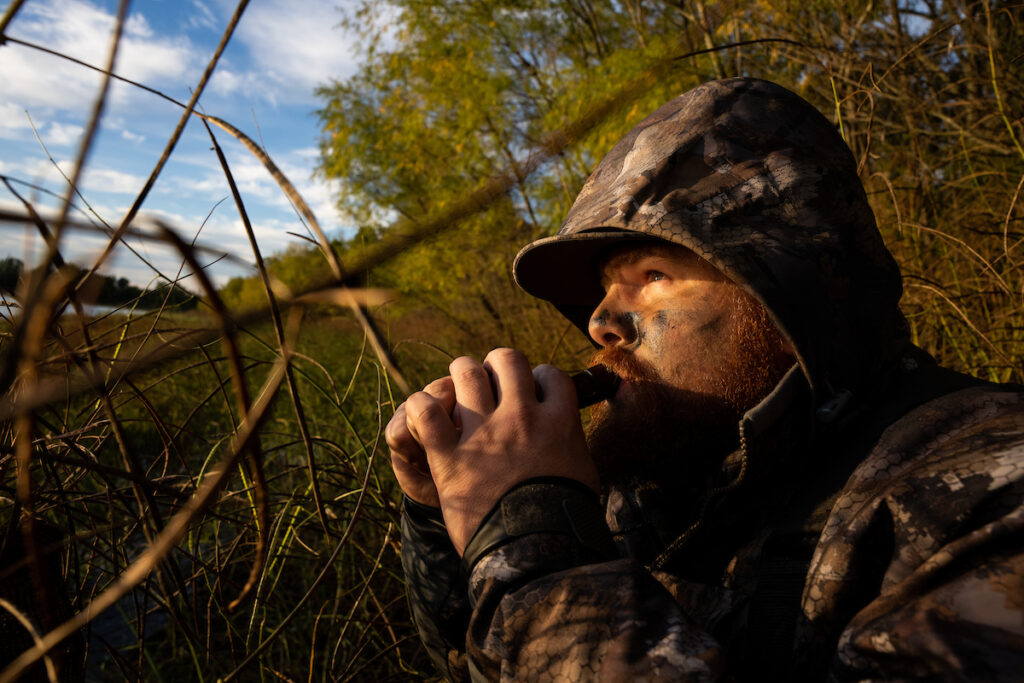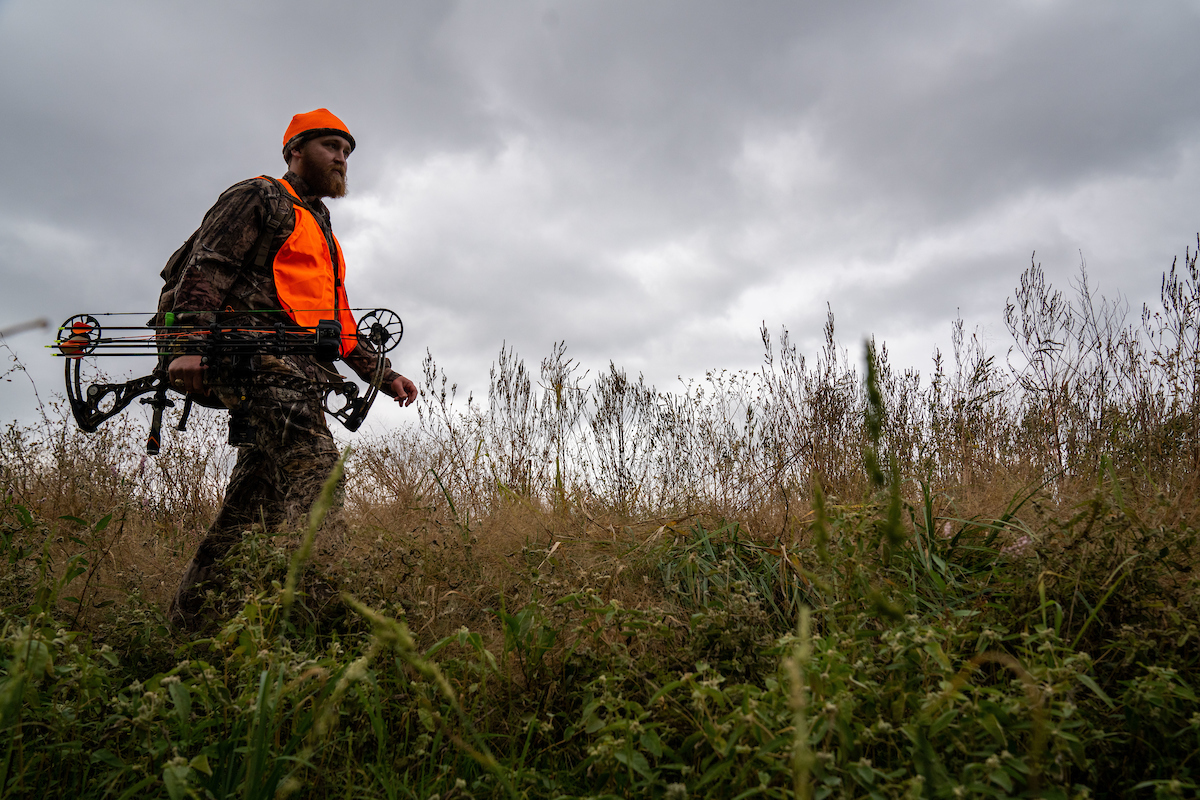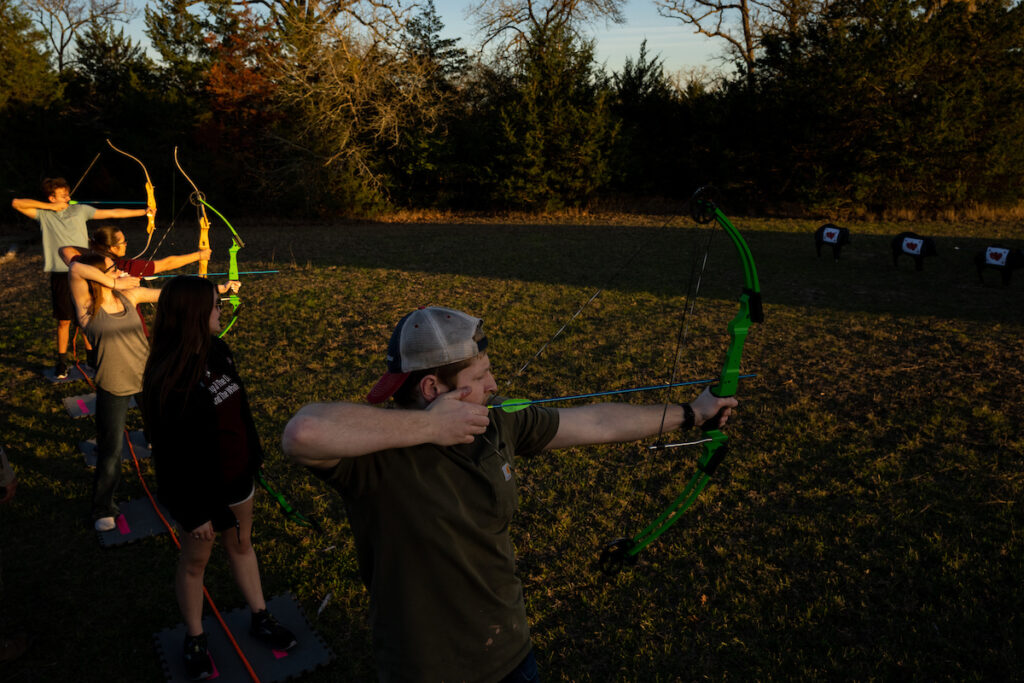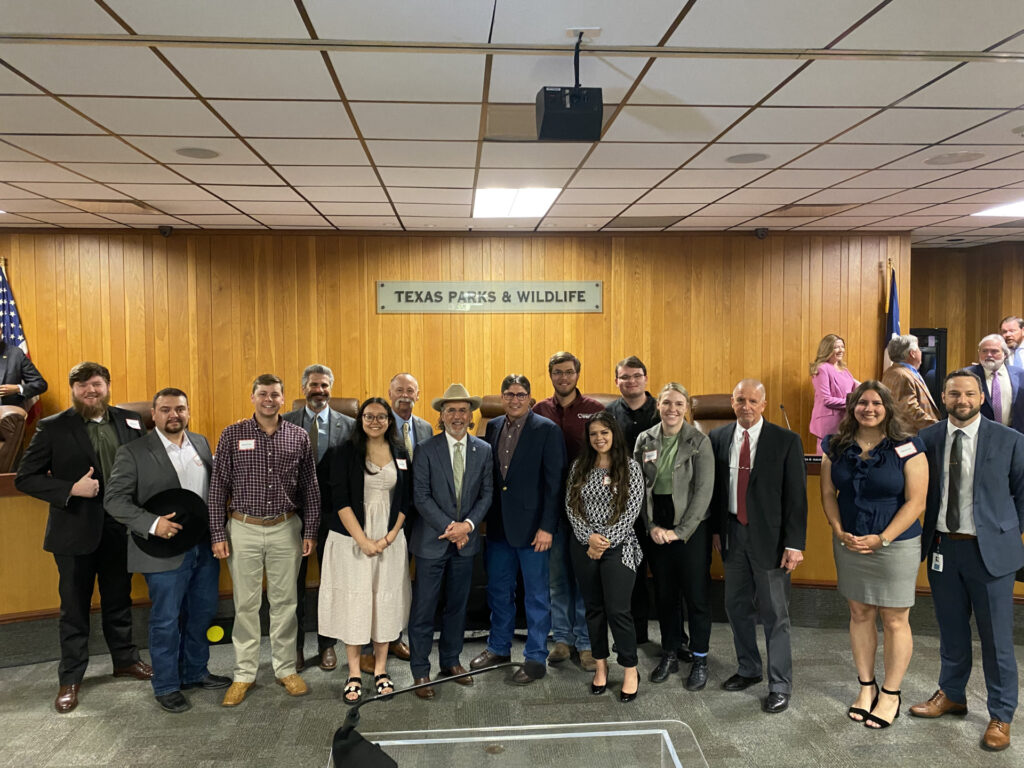On the hunt for sustainability
New course explores the role of hunting in conservation
This spring semester marked the beginning of a unique course opportunity for students within the Texas A&M College of Agriculture and Life Sciences to explore wildlife conservation through the lens of a multifaceted practice that has sustained humans for millennia and is foundational to the North American Model of Wildlife Conservation—hunting.

Through this elective course, Conservation Principles and the Role of Hunting, James Cathey, Ph.D., professor in the Department of Rangeland, Wildlife and Fisheries Management, facilitates outdoor experiences for students while also providing critical insight into historic and modern wildlife policies, contemporary conservation actions and funding sources, and the linkage to hunting.
Cathey said that while hunting may not suit everyone, conservation should. And while he grew up hunting, he realizes that not everyone has – and this course helps make that connection between the two.
He easily recalls time spent outdoors with his family as a child. From attempting to match his father’s strides as a young boy during a deer hunt to eating fresh-caught fish with his family next to the Colorado River, outdoor experiences shaped his connection with the natural world and directed his conservation-based career path.
Cathey earned a bachelor’s and master’s degree in wildlife and fisheries sciences from Texas A&M University and a doctorate in wildlife sciences from Texas Tech University. Prior to joining the Texas A&M faculty in 2002, he served as a research scientist with the Texas Parks and Wildlife Department at the Gus Engeling and Richland Creek wildlife management areas.
“In a time where so many people grow up in urban centers as opposed to a rural upbringing similar to my own, hunting may be foreign to some of our students,” Cathey said. “My goal is not to force hunting upon students, but I want them to understand what ethical hunting is and, more importantly, its role in conservation and wildlife management.”

“There is a huge difference between the regulated hunting we have now and the unregulated market hunting that we saw in the past without seasons or bag limits. There was this idea that our resources were inexhaustible, but it quickly became apparent that was wrong.”
James Cathey, Ph.D.
A complex history that changed with advocacy and science
The history of wildlife harvesting and policy in the U.S. is complicated. Perhaps no better example is the unregulated slaughter and near extinction of the American bison, among other species, he said.
“There is a huge difference between the regulated hunting we have now and the unregulated market hunting that we saw in the past without seasons or bag limits,” Cathey said. “There was this idea that our resources were inexhaustible, but it quickly became apparent that was wrong.”
Beginning in the late 19th century, some of the most vocal advocates calling for wildlife conservation and management were hunters and anglers who saw the danger in steep demand for fur, meat and feathers. Among those hunters calling for action were conservation icons President Theodore Roosevelt and later, Aldo Leopold, who is often considered the father of wildlife ecology.
“These hunters were the driving force behind reversing trends in declining wildlife, habitat loss and promoting what is now known as the North American Model of Wildlife Management,” Cathey said. “They wanted to ensure these resources were conserved for generations to come.”
A new model of management
The North American Model of Wildlife Management emerged in the late 1800s and is comprised of seven key tenets—the most significant being that wildlife resources are in a public trust belonging to everyone. Further, the model asserts that wildlife management should be led by scientific fact, and everyone should have equal access to hunting opportunities.
“Considering that across history hunting has often been dominated or outright monopolized by the elite in power, the inclusion of hunting democracy in the North American wildlife model truly sets us apart and serves as a global example to its importance in wildlife conservation,” said Roel Lopez, Ph.D., head of the Department of Rangeland, Wildlife and Fisheries Management and course co-instructor.
Throughout the course, students focus on different aspects of the North American Model of Wildlife Management, potential challenges, as well as governmental policy that enables it to properly function.
Passed in 1937, the Pittman-Robertson Wildlife Restoration Act reallocated an existing federal excise tax on ammunition, firearms and archery equipment to fund diverse conservation projects and hunter education. Additionally, the act stipulates that for states to receive this funding, all licensing fees paid for by hunters must be administered by the respective state’s fish and game management agency.
In Texas, 100% of hunting and fishing licensing fees are used by the Texas Parks and Wildlife Department to finance on-the-ground conservation efforts including habitat restoration, fish stocking, wildlife management and land conservation. According to the department, more than 2.7 million hunting and fishing licenses are sold annually.
“Whenever I buy a deer hunting license or hunting gear, it’s amazing to know that money goes directly to conservation,” said Kennedy Bailey, a junior pursuing a degree in rangeland, wildlife and fisheries management.
Field-based experiences
In addition to a focus on hunting history, ethics, responsibility and laws, students receive training in firearm and archery safety, as well as first aid and basic field survival skills.

“My favorite aspect of the class was definitely the hands-on experiences,” said Kylie Perez, a graduate student in the Department of Rangeland, Wildlife and Fisheries Management.
Through the curriculum and final exam, students earn their Hunter Education Certificate, which is required for hunters born after Sept. 2, 1971.
Perez, who previously had no hunting experience, said she hopes to use her new hunting knowledge and skills to introduce others to the practice, especially people of color.
According to the U.S. Fish and Wildlife Service’s 2016 National Survey of Fishing, Hunting and Wildlife-Associated Recreation, 97% of all U.S. hunters are white and predominantly male.
“I might not look like the stereotypical hunter, but I can’t wait for the day that I get to go on my first hunt,” Perez said. “As a woman of color in wildlife, it’s important to be an advocate, speak out on the broader benefits of hunting to wildlife conservation and share that information with other people who look like me.”
Cathey said empowering students to understand the importance of hunting and advocate for conservation policy is an important part of the course, especially as the population of Texas expands and urban sprawl impacts critical habitat.
Policy in action
In February, students gained insight into the state conservation policy process by attending a Texas Parks and Wildlife Department Commission meeting in Austin.

While there, students observed commission members debating a proposed fishing regulation and met with Texas A&M alumni Clayton Wolf, chief executive officer of the Texas Parks and Wildlife Department, as well as former student Arch “Beaver” Aplin who was appointed to the Texas Parks and Wildlife Commission in 2018 and currently serves as its chairman.
“The exposure to professionals and such influential individuals in Texas conservation has been so meaningful,” Bailey said.
From field to plate
Following the true progression of a successful hunt, the course culminates in students learning how to safely break down, process and cook game meat.
“Wildlife resources are critical to the human food chain and greatly contribute to food security,” Cathey said.
Over the past decade, the U.S. has seen increased interest in sourcing local, sustainable food resources. Wild game is a perfect example of an ecologically friendly food source that provides lean protein and other key nutrients.
From Field to Plate, a 2018 Texas A&M AgriLife Extension Service publication provides information on the benefits of locally harvested game, as well as instructions on processing and storage.
In addition to contributing to human health through nutrition and physical activity, harvesting wild game in compliance with state limits benefits the environment and wildlife health. Hunting helps maintain a healthy carrying capacity on the land, defined as the number of organisms an area can support without causing environmental degradation.
“All of the classes I have taken in the Department of Rangeland, Wildlife and Fisheries Management have grown my love for wildlife, and this class is no different,” Bailey said.
Because the course takes such a holistic view of hunting and its role in wildlife management, as well as environmental and human health, Perez said it offers something for everyone.
“I enjoyed hearing the broad range of perspectives in the class and learning more in-depth information on hunting,” Perez said. “One of the most important things about being in the natural resources field is being well rounded. Plus, everyone eats every day—it’s important to know where your food comes from.”


